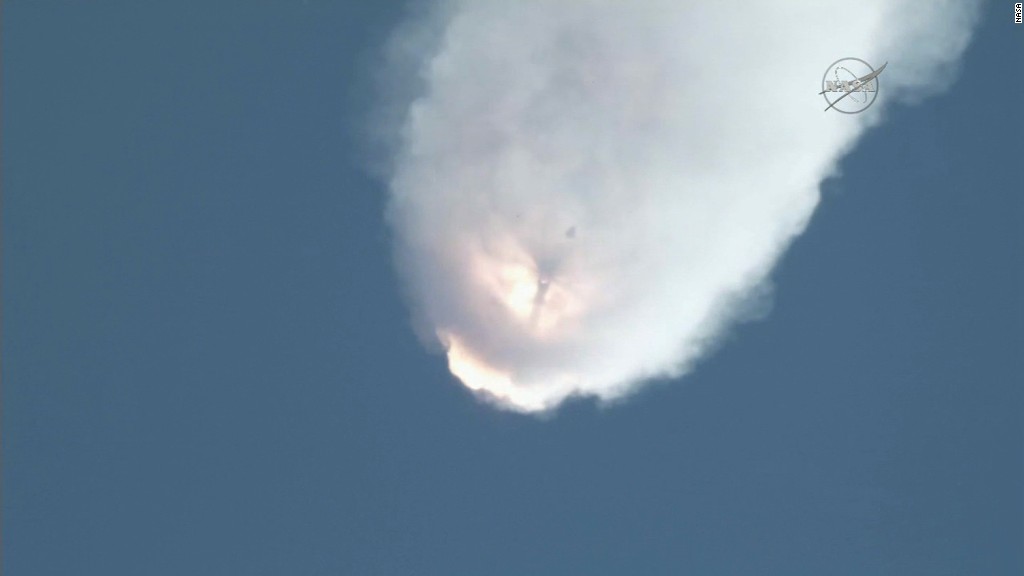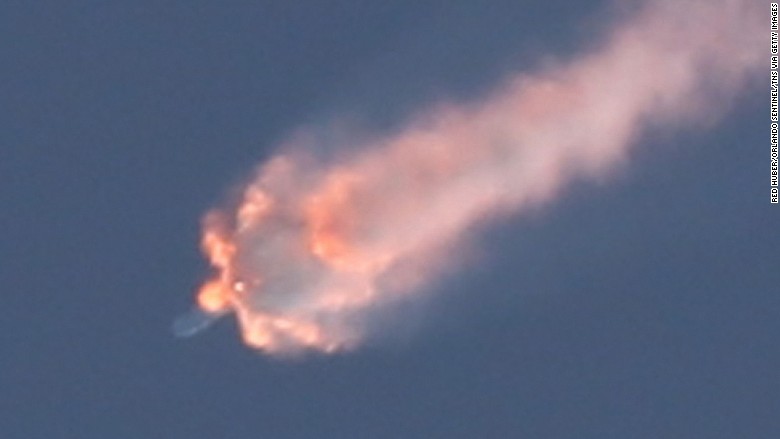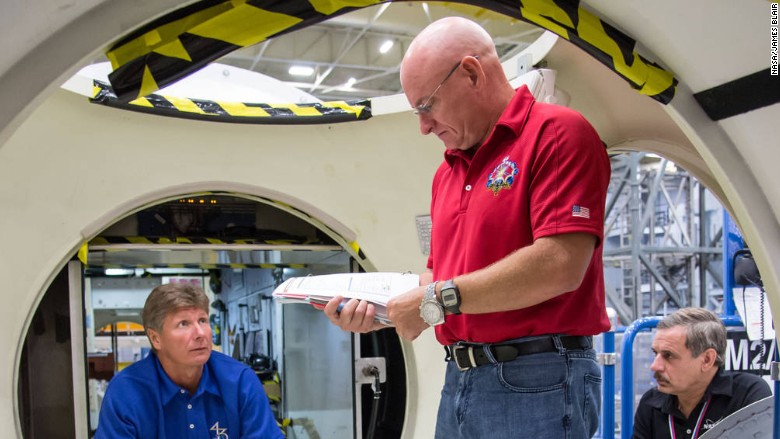
SpaceX's latest attempt to bring supplies to the International Space Station failed after its vessel, Dragon, exploded shortly after it launched in Florida Sunday morning.
It was the third unmanned cargo mission destined for the ISS that has failed in recent months. But it is the first unsuccessful attempt by SpaceX -- the space exploration company headed by Tesla's (TSLA) Elon Musk.
The setback left everyone -- including SpaceX and NASA -- with many questions. Here's what we know so far:
What went wrong? No one is sure yet. About two minutes after Dragon lifted off, the rocket began to break apart.
SpaceX said it will conduct a thorough investigation into the cause of the failure.
Gwynne Shotwell, SpaceX's president and COO, said investigators will have more than 3,000 points of data to review, including video footage of the first stage of the launch. But Shotwell said there is no video of the second stage, which is likely when the crucial error occurred.
Musk tweeted Sunday that there was "an overpressure event in the upper stage liquid oxygen tank. Data suggests counterintuitive cause." He and others at SpaceX and NASA offered little else to explain what went wrong, but promised more answers in the future.
Related: SpaceX rocket explodes after launch

What was the mission? SpaceX has a contract with NASA to bring supplies to the International Space Station, which is a large laboratory that has been orbiting the Earth since 1998. The space station is a joint venture of the United States and Russia.
SpaceX successfully carried out seven supply missions for NASA already, and on Sunday, Dragon was loaded with research equipment and supplies for the crew on board the space station.
Who is at the International Space Station? Three astronauts -- two Russians and an American -- are on board.
Scott Kelly, 51, of New Jersey is 93 days into his one-year stay. Kelly is the identical twin of astronaut Mark Kelly, the husband of former U.S. Congresswoman Gabrielle Giffords.
The Kelly brothers are the only siblings who have traveled to space; Mark Kelly's last mission was in 2011. The brothers are participating in a NASA study of twins to investigate the "subtle effects and changes that may occur in spaceflight as compared to Earth."
Scott Kelly was watching Dragon from space as it exploded. In a tweet, he wrote, "Space is hard."
Mikhail Kornienko and Gennady Padalka of the Russian Federal Space Agency arrived at the space station with Kelly after a launch from Kazakhstan in March. The three crew members are primarily conducting human health research.

"The study results will help improve researchers' understanding of how blood pressure in the brain affects eye shape and vision," a March 27 NASA blog post says. "This knowledge may benefit people on Earth with disease states that include swelling and pressure to the brain or who are confined to bed rest."
What was on board the doomed SpaceX rocket? Dragon was carrying two tons of cargo, including:
-- 1,500 pounds of food, provisions and packages for the crew members at the space station
-- "Critical materials" to support more than 35 research projects
-- 1,000 pounds of hardware, such as equipment for the power system and "environmental control"
-- An International Docking Adapter, which is meant to be compatible with different commercial spacecrafts
-- A water filtering system meant to replace the existing one on board the ISS, which is wearing out
-- Materials for more than 30 student research projects
Related: Economic crisis hits at heart of Russia's space program
How significant is the failure? "We lost a lot of important research equipment. I don't want to minimize the loss," William Gerstenmaier, the associate administrator for human exploration at NASA, said Sunday.
The priority for NASA lies in getting the crew at the space station food and water supplies, which at current levels would run out around the end of October.
But more cargo missions are planned this summer, including Russian flights on July 3 and July 22, and a Japanese launch on August 16. The next U.S.-based flight, which will also be launched by SpaceX, is scheduled for September.
Unmanned resupply missions to the International Space Station are carried out multiple times a year, and three spacecrafts have already reached the ISS from Earth so far this year.
But Dragon's mission marks the third failure in nine months, an unprecedented rate in the space station's history.
"We expect to lose vehicles. We didn't expect to lose three in a one-year time frame," Gerstenmaier said.
What happened to the debris of Dragon? NASA said it was able to extract useful data from some pieces of the destroyed space craft. But officials are asking anyone who finds debris to call a hotline: (321) 867-2121.

